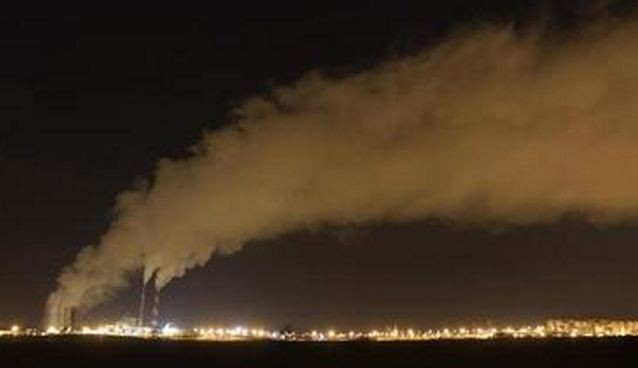For the first time since it began monitoring carbon dioxide in the global atmosphere, the monthly global average concentration of this greenhouse gas exceeded 400 parts per million in March, said the National Oceanic and Atmospheric Administration (NOAA).
The global monthly average for CO2, the gas scientists say is mostly responsible for global warming, hit 400.83 parts per million in March, the first time the average surpassed 400 ppm for an entire month since such measurements began in the late 1950s, NOAA said.
"It's both disturbing and daunting," said Pieter Tans, lead scientist of NOAA's Global Greenhouse Gas Reference Network.
"Daunting from the standpoint on how hard it is to slow this down. Reaching 400 parts per million as a global average is a significant milestone".
Tans said NOAA reported 400 ppm when all of its Arctic sites reached that value in the spring of 2012. In 2013 the record at NOAA's Mauna Loa Observatory first crossed the 400 ppm threshold. Reaching 400 parts per million as a global average is a significant milestone.
"This marks the fact that humans burning fossil fuels have caused global carbon dioxide concentrations to rise more than 120 parts per million since pre-industrial times," said Tans. "Half of that rise has occurred since 1980."
The International Energy Agency reported on March 13 that the growth of global emissions from fossil fuel burning stalled in 2014, remaining at the same levels as 2013.
Carbon dioxide is invisible, odorless, and colorless and is responsible for 63 percent of the warming attributable to all greenhouse gases, said NOAA.
In 2013, global CO2 emissions due to the burning of fossil fuels (and cement production) were 36 gigatonnes (GtCO2). This total is 61 percent higher than 1990 (the Kyoto Protocol reference year) and 2.3 percent higher than 2012. In 2014, global CO2 emissions are projected to increase by an additional 2.5 percent over the 2013 level.
Over 91 percent of CO2 emissions are emitted by the burning of fossil fuels and the production of cement while nine percent comes from land use change. Of total man-made CO2, 50 percent is released into the atmosphere; 26 percent into the land and 24 percent into the oceans.
NOAA said stabilizing the rate of emissions isn't enough to avert climate change. Data show the average growth rate of carbon dioxide concentration in the atmosphere from 2012 to 2014 was 2.25 ppm per year, the highest ever recorded over three consecutive years.
NOAA bases the global carbon dioxide concentration on air samples taken from 40 global sites. NOAA and partner scientists collect air samples in flasks while standing on cargo ship decks, on the shores of remote islands and at other locations around the world.
It takes some time after each month's end to compute this global average because samples are shipped from locations for analysis at NOAA's Earth System Research Laboratory in Boulder, Colorado.
The last time carbon dioxide reached 400 ppm was millions of years ago, according to the journal, Nature Geoscience. A 2009 report in the journal found evidence of CO2 levels of 365 ppm to 415 ppm roughly 4.5 million years ago.
CO2 levels were around 280 ppm prior to the Industrial Revolution in the late 1800s, when large amounts of greenhouse gases began to be released by the burning of fossil fuels.



























